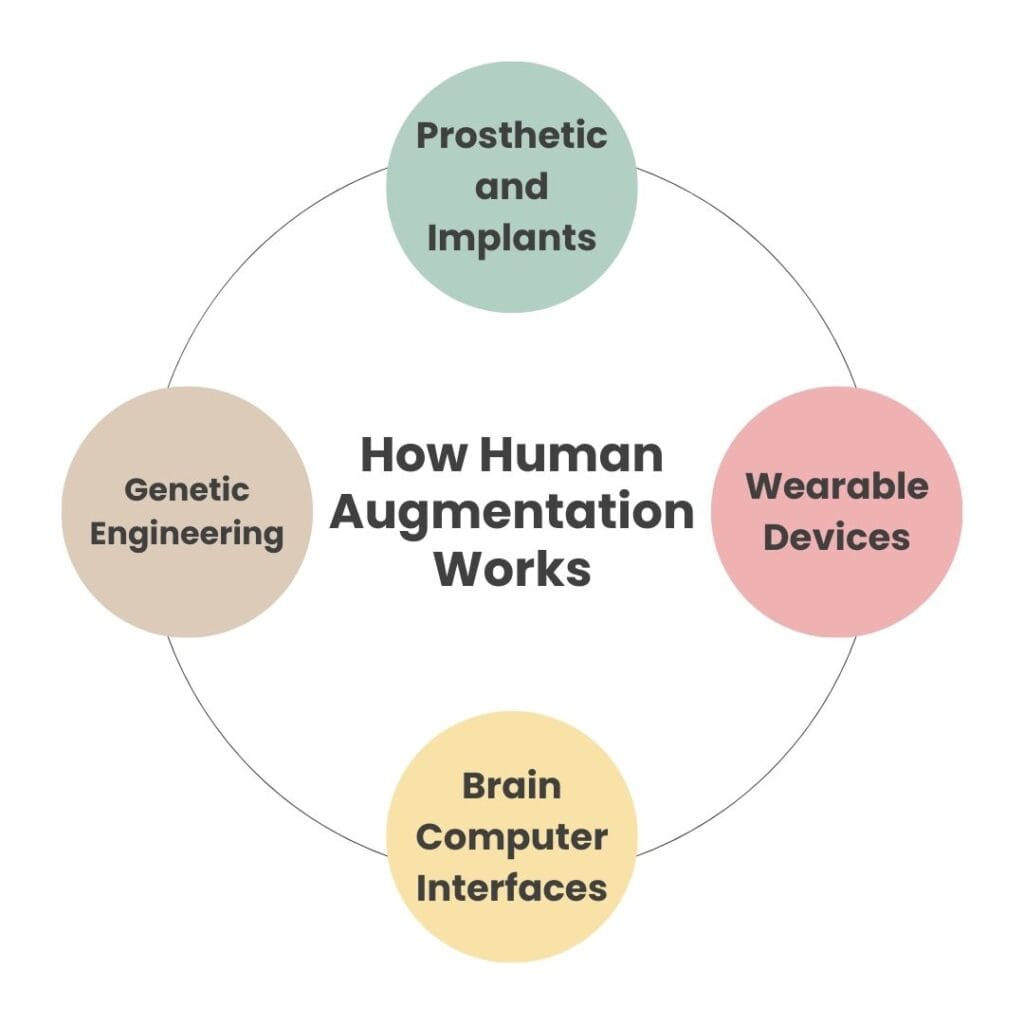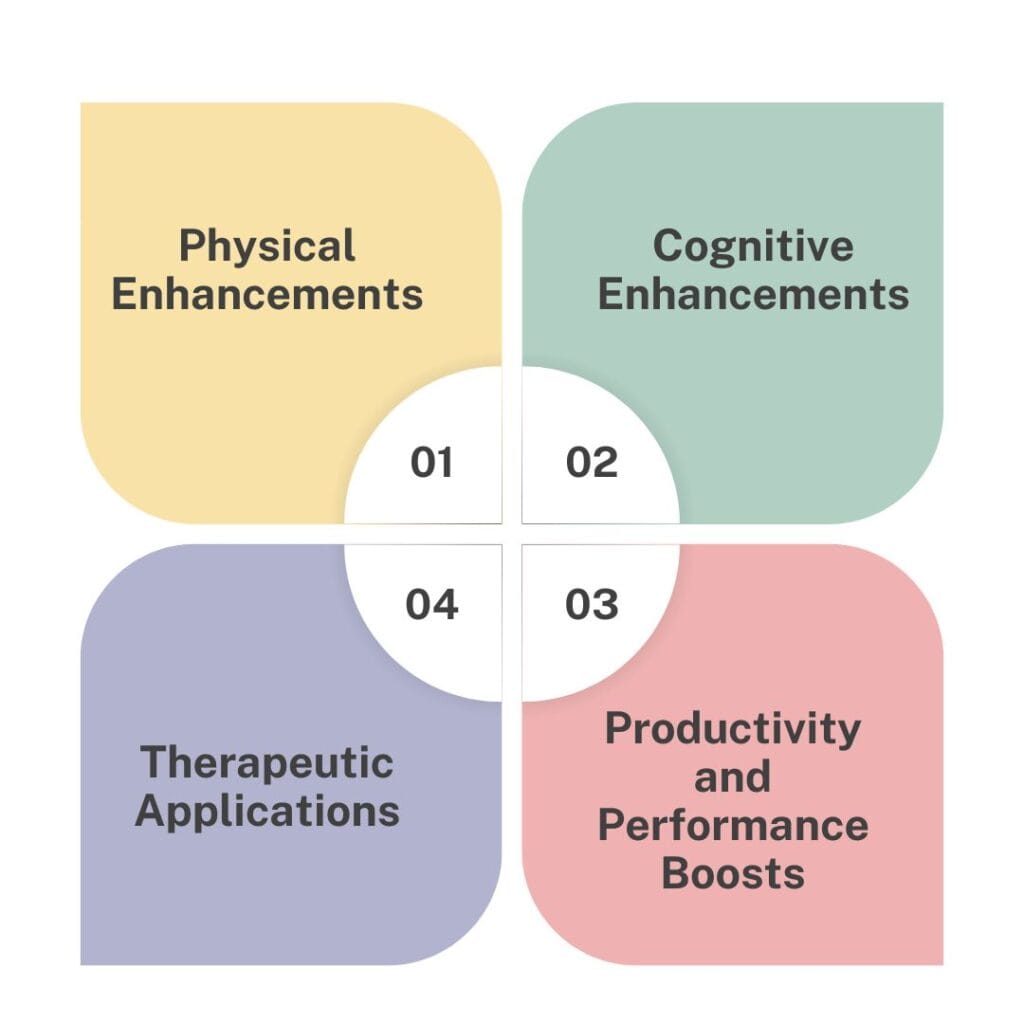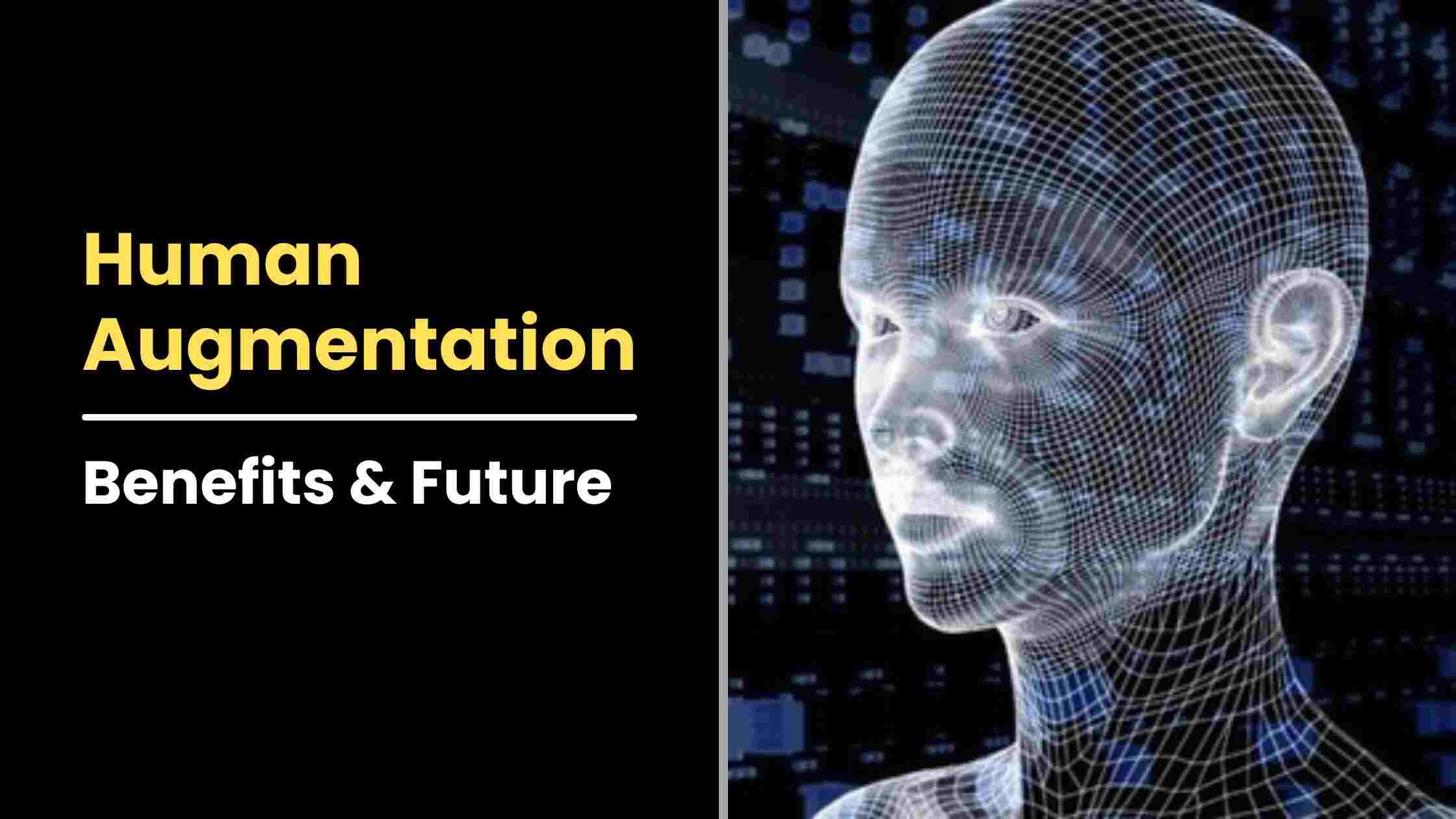Have you ever wondered about the concept of Human Augmentation? It’s a fascinating field that explores ways to enhance and improve our human capabilities. In this blog, we’ll dive into everything you need about human augmentation.
Human augmentation is using technology to enhance or improve human abilities, whether physically, cognitively, or sensory-wise. It’s an exciting area that holds great promise for the future. The possibilities are endless, from prosthetics and implants to wearable devices and brain-computer interfaces.
In this comprehensive guide, we’ll explore what is Human Augmentation, how it works, benefits, and ethical considerations of human augmentation. Get ready to expand your understanding of this cutting-edge technology!
Table of Contents
- What is Human Augmentation?
- How Human Augmentation Works
- Benefits of Human Augmentation
- The Ethical Considerations of Human Augmentation
- The Future of Human Augmentation
- FAQ’s
- Conclusion
What is Human Augmentation?

Human augmentation refers to the use of technology to enhance or improve human abilities. This can include physical, cognitive, or sensory enhancements. The goal of human augmentation is to unlock our full potential and push the boundaries of what’s possible for the human body and mind.
Human augmentation technologies can take many forms, from prosthetics and implants to wearable devices and brain-computer interfaces. These advancements aim to improve our strength, dexterity, senses, and cognitive capacities, ultimately transforming the human experience.
How Human Augmentation Works

Human augmentation works by integrating technology directly with the human body or mind. This can be achieved through:
1. Prosthetics and Implants
Artificial limbs, organs, or devices that are surgically implanted to replace or enhance a person’s natural body parts.
2. Wearable Devices
External technologies like exoskeletons, smart glasses, or sensors that are worn on the body to augment human abilities.
3. Brain-Computer Interfaces
Direct connections between the brain and digital devices, allow for the control of technology using thoughts and neural signals.
4. Genetic Engineering
Modifying the human genome to enhance physical, cognitive, or sensory traits.
The specific mechanisms and technologies used in human augmentation vary widely, but the underlying goal is to seamlessly integrate technology with the human body and mind.
Benefits of Human Augmentation

Human augmentation offers a wide range of potential benefits, including:
Physical Enhancements
- Improved strength, stamina, and dexterity
- Restored mobility for those with disabilities
- Enhanced sensory capabilities (sight, hearing, touch)
Cognitive Enhancements
- Improved memory, focus, and processing speed
- Expanded learning and problem solving abilities
- Enhanced decision-making and creativity
Therapeutic Applications
- Treating neurological disorders and mental health conditions
- Restoring function for those with physical disabilities
- Improving quality of life for the elderly or chronically ill
Productivity and Performance Boosts
- Increased efficiency and productivity in the workplace
- Enhanced athletic and artistic performance
- Improved safety and resilience in high-risk environments
The Ethical Considerations of Human Augmentation
While human augmentation holds great promise, it also raises a number of ethical concerns that must be carefully considered:
Equity and Access
Ensuring that the benefits of human augmentation are available to all, regardless of socioeconomic status or other factors.
Privacy and Autonomy
Protecting personal privacy and the right to make autonomous decisions about one’s own body and mind.
Safety and Unintended Consequences
Ensuring the long-term safety and reliability of augmentation technologies, and addressing potential unforeseen impacts.
Fairness and Competition
Maintaining a level playing field in areas like sports, education, and the workforce, where augmented individuals may have an advantage.
Societal Impact
Understanding and mitigating the broader social, cultural, and economic implications of widespread human augmentation.
These ethical considerations will continue to shape the development and implementation of human augmentation technologies.
The Future of Human Augmentation
As technology advances, the future of human augmentation looks increasingly promising. Experts predict that we will see continued advancements in areas like neural implants, genetic engineering, and wearable exoskeletons.
The ultimate goal of human augmentation is to unlock our full potential and enhance the human experience. While the ethical challenges are significant, the potential benefits to individuals and society are profound. As we move forward, it will be crucial to navigate these complex issues with care and foresight.
FAQ’s
Human augmentation refers to the use of technology to enhance human abilities, while transhumanism is a broader philosophy about the evolution and transformation of the human condition.
The safety of human augmentation technologies varies depending on the specific technique and implementation. Rigorous testing and regulation are essential to ensure safety and minimize risks.
Yes, human augmentation technologies can be used to restore function and improve the quality of life for individuals with physical, cognitive, or sensory disabilities.
Some potential disadvantages of human augmentation include issues of equity and access, privacy concerns, safety and reliability risks, and the societal impact of widening disparities between augmented and non-augmented individuals.
Human enhancement refers to the broader goal of improving human capabilities beyond their normal limits, while human augmentation specifically focuses on the use of technology to achieve those enhancements.
The key pros of human augmentation include physical enhancements like improved strength, mobility, and sensory abilities, cognitive enhancements that boost mental performance, and therapeutic applications that can restore function and improve quality of life.
Conclusion
In conclusion, human augmentation is an exciting and rapidly evolving field that holds immense potential for enhancing the human experience. From physical and cognitive improvements to therapeutic applications, the possibilities are vast and far-reaching.
However, as we explore the frontiers of human augmentation, it’s crucial that we carefully consider the ethical implications and ensure these technologies are accessible and beneficial for all. By navigating the challenges with foresight and responsibility, we can unlock the true transformative power of human augmentation and usher in a future where we can transcend the limitations of our biology.
The journey of human augmentation has only just begun, and the possibilities are truly boundless.

